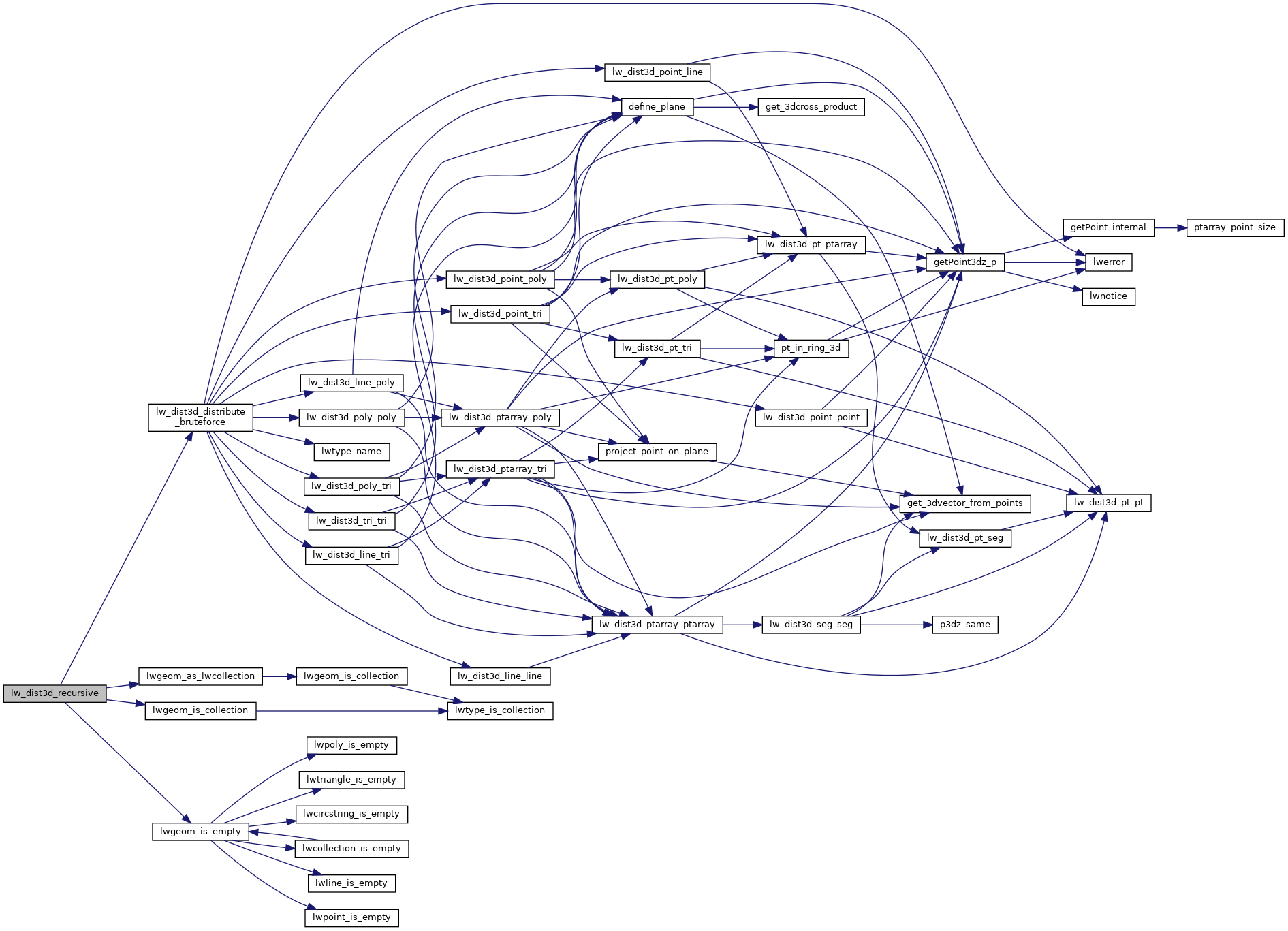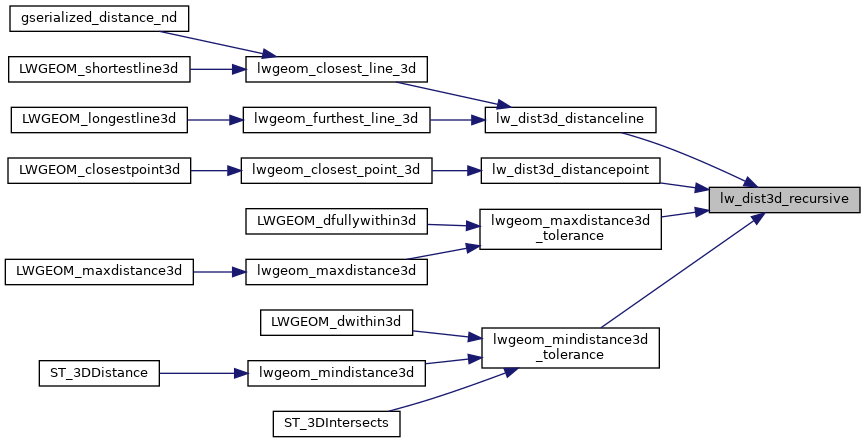◆ lw_dist3d_recursive()
This is a recursive function delivering every possible combination of subgeometries.
Definition at line 519 of file measures3d.c.
int lwgeom_is_collection(const LWGEOM *lwgeom)
Determine whether a LWGEOM contains sub-geometries or not This basically just checks that the struct ...
Definition: lwgeom.c:1097
LWCOLLECTION * lwgeom_as_lwcollection(const LWGEOM *lwgeom)
Definition: lwgeom.c:233
static int lwgeom_is_empty(const LWGEOM *geom)
Return true or false depending on whether a geometry is an "empty" geometry (no vertices members)
Definition: lwinline.h:199
int lw_dist3d_distribute_bruteforce(const LWGEOM *lwg1, const LWGEOM *lwg2, DISTPTS3D *dl)
This function distributes the brute-force for 3D so far the only type, tasks depending on type.
Definition: measures3d.c:598
int lw_dist3d_recursive(const LWGEOM *lwg1, const LWGEOM *lwg2, DISTPTS3D *dl)
This is a recursive function delivering every possible combination of subgeometries.
Definition: measures3d.c:519
Definition: liblwgeom.h:573
Definition: liblwgeom.h:457
References DIST_MIN, DISTPTS3D::distance, LWCOLLECTION::geoms, lw_dist3d_distribute_bruteforce(), LW_FALSE, LW_TRUE, LWDEBUG, LWDEBUGF, lwgeom_as_lwcollection(), lwgeom_is_collection(), lwgeom_is_empty(), DISTPTS3D::mode, LWCOLLECTION::ngeoms, DISTPTS3D::tolerance, and LWGEOM::type.
Referenced by lw_dist3d_distanceline(), lw_dist3d_distancepoint(), lwgeom_maxdistance3d_tolerance(), and lwgeom_mindistance3d_tolerance().
Here is the call graph for this function:

Here is the caller graph for this function:
